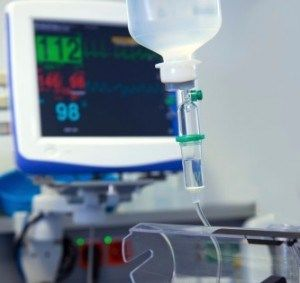
Medical Device Integration a Key Concern for Patient Safety
Medical Device Integration a Key Concern for Patient Safety
Tue Mar 17 2015
Start Date:
End Date:

Medical Device Integration a Key Concern for Patient Safety
Even though patient monitoring devices are among the most basic, essential, and frequently used tools in healthcare, medical device integration is a subject that has been largely relegated to second-tier status as healthcare organizations continue to wrestle with implementing and tweaking their EHR systems, coping with financial challenges, and meeting federal quality expectations.
While it may seem like ensuring the interoperability of medical devices is something that can stay on the to-do list a little longer, a new survey from West Health highlights the critical role of medical device integration – and illustrates the deep concerns of nursing staff that a lack of interoperability is putting patient safety at risk every day.
In the inpatient setting, bedside monitors provide a large percentage of the information that clinicians need to make treatment decisions, yet they often still require nurses to manually note down information and transcribe it into a chart, whether paper or electronic.
When the Gary and May West Health Institute and Harris Poll asked more than 500 front-line nurses about their experiences with this process, the results were worrisome, to say the least.
Nearly all nurses have contact with at least one medical device during a typical shift, and the majority must interact with two or more. Forty-one percent spend three or more hours of their working time setting up monitors and inputting or transcribing data. More than half of respondents also interact more extensively with the equipment: troubleshooting problems, explaining information to patients, and managing alerts or alarms.
As a result of this extensive experience, half of all nurses said they had witnessed a patient safety error that occurred due to a lack of medical device integration. When medical data cannot be automatically inputted into the EHR, inaccurate manual transcription becomes a major concern, one nurse said. “I have seen many instances where numbers were incorrectly transcribed or put in reverse or put in the wrong column when typed manually, which can cause errors,” the participant commented.
Nearly four in ten nurses believe that poor medical device integration is one of the biggest challenges of healthcare technology, and three-quarters believe that the process of coordinating medical device data is “burdensome,” and takes time away from patient care.
“Most patients are on more than one medical devices, and nurses care for five to six patients per shift,” explained another respondent. “The nurse has to manage the patient and machines, all while working with less support staff and more mandated overtime.”

Nurses are deeply frustrated by the fact that this unnecessary data entry is taking their time and attention away from providing high quality and safe patient care. The survey participants placed high value on the ability to use their full attention to care for their patients, yet the need to constantly monitor, adjust, and transcribe from devices cause distractions and delays, most nurses say, preventing important information from reaching the rest of the care team in a timely manner.
Ninety-one percent of nurses believe that automated medical device integration would be very helpful to them, while three-quarters think that devices that can correct themselves would be beneficial for patient care. Nearly every participant thinks that medical devices should, at this point, be able to seamlessly and automatically share data with each other.
And they strongly believe that more reliable medical device integration would add up to meaningful reductions in patient safety errors and adverse events. Sixty percent believe that medical errors could be significantly reduced by the automated transfer of data between devices and the EHR. Almost all respondents believe that medical device integration would have at least some impact on patient safety. Most nurses estimate that up to 50 percent of patient safety errors could be avoided by eliminating the need for manual transcription.
As more providers place themselves at risk for losing reimbursement due to poor quality and patient safety, the need to focus on medical device integration will become increasingly apparent. Not only is poor interoperability affecting the job satisfaction and performance of nursing staff, but patients are put in jeopardy when important health information isn’t where it should be. Investing in a medical device integration project could produce far-ranging benefits that improve the quality of care, reduce preventable errors, and keep clinical staff working up to their full capacity.
This article was originally posted on HealthITAnalytics.
